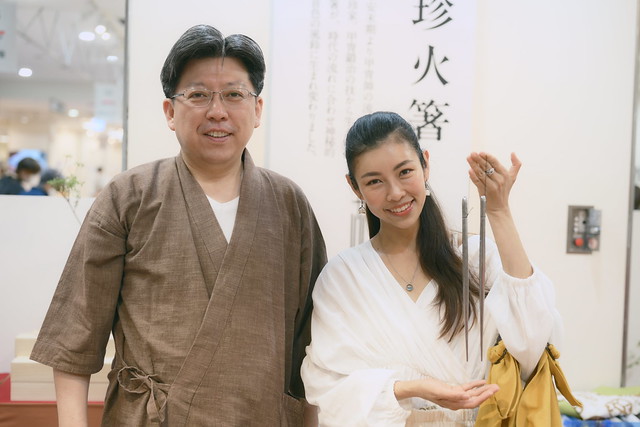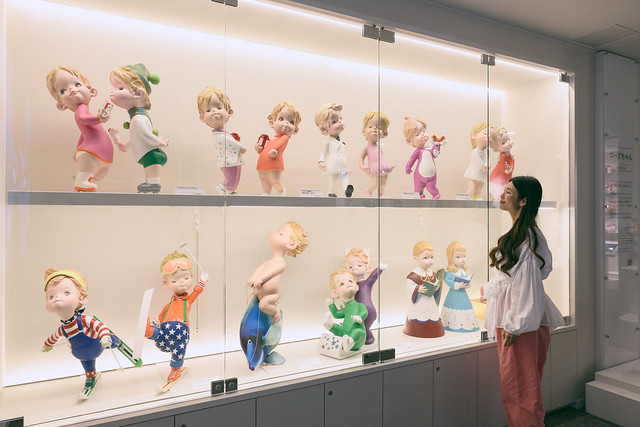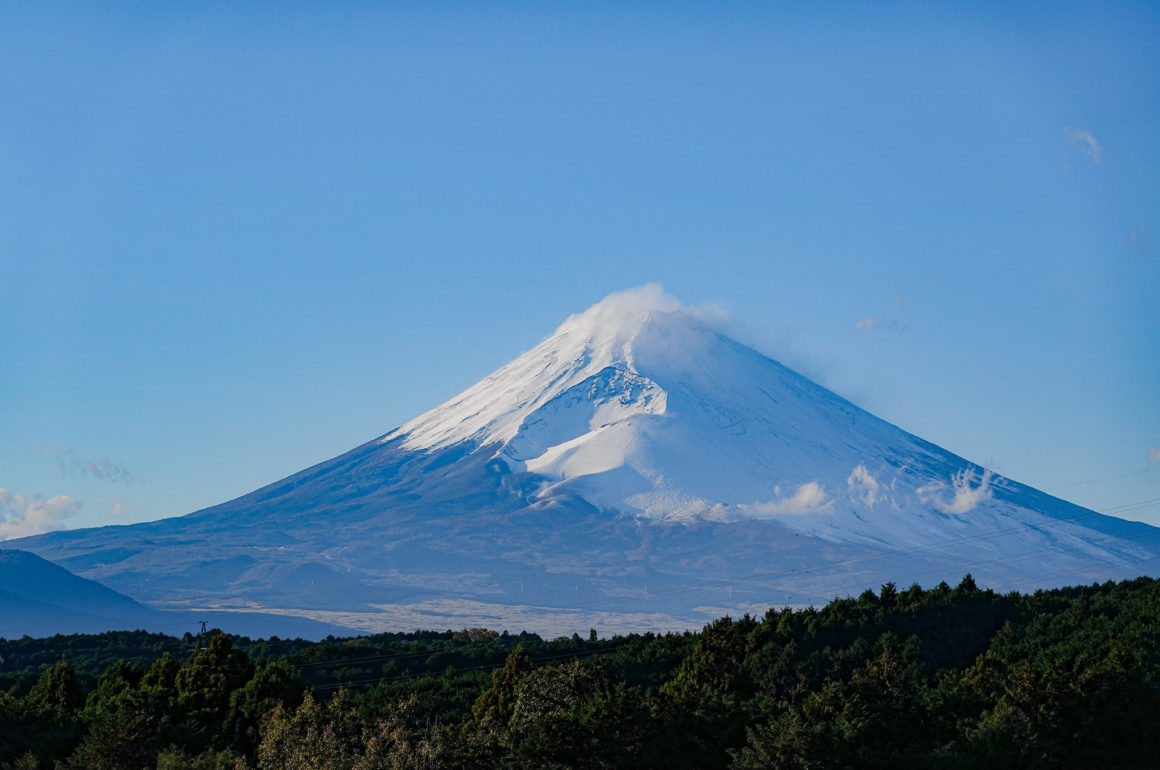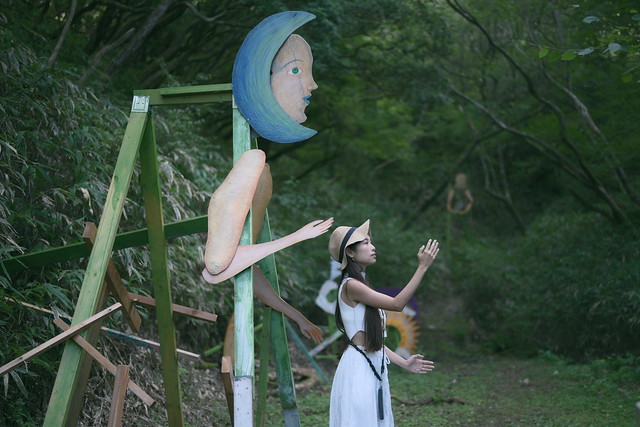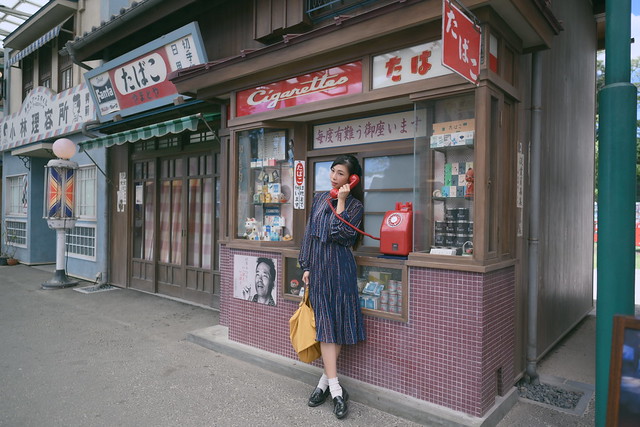
Read my Day 1 blog post here about abalone feast at Shima Peninsula.
Read my Day 2 blog post here about divine Ise and Matsusaka beef.
Read my Day 3 blog post here about Iga ninja and Iga beef sukiyaki
Today we are onto the last day of my #visitmie trip. I spend 4 good full days in one single prefecture and yet there are still lots of places I have not covered. #Ineedmorelifetimes.
Today we will be venturing into the very exciting Kuwana city to explore a beautiful botanical park, and some of the world’s top thrill rides that will guarantee to give your heart some good kicks.
Gozaisho Ropeway
Mt Gozaisho houses the only ski resort in Mie, which also means that this is the only place you can see and play with snow in the prefecture.
But if you go in summer time, you can still enjoy a great view and a refreshing time away from the heat, as the temperature can be 5°C lower up the mountain compared to the city.
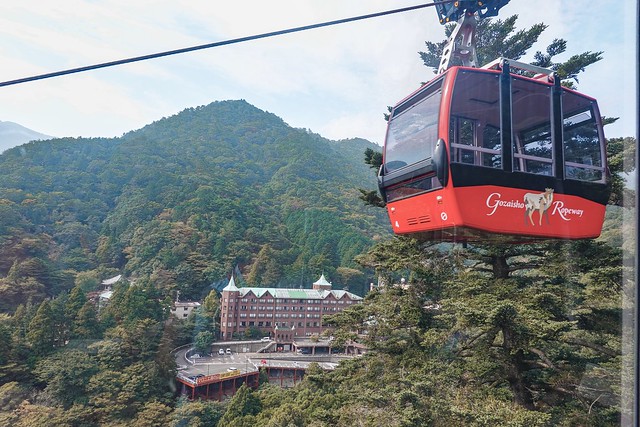
You will see an antelope-like animal as the mascot of the ropeway, it is called “Kamoshika”, or Japanese serow, a really rare animal that is only found in dense woodlands in central Japan. If you spot one on the way up/down, consider it your super lucky day!
No kamoshika for me, but I found bambi!

Gozaisho Ropeway also has the highest ropeway iron tower in Japan – check out that white iron tower! Standing at the height of 61m (200ft), this tower is 60 years old and with regular maintenance it’s as strong and tough as it has ever been!

Although there’s not much you can do in summer time, you get a great view from the summit and also this torii in the sky. For hiking buff, there are a few hiking tracks but they all looked like they are for advanced hikers. So I’d say go with the scenic ropeway!
Ito Shuzou Sake Brewery 伊藤酒造
Japanese sake! ♡

Today we are visiting Ito Shuzou at the foot of Suzuka mountains.
Mie is an important region to produce good sake since ancient time dedicated to the most important shrine in Japan – Ise Jingu.

Since sake’s main component is water, it is also important that Ito Shuzou uses only the best award-winning water for their sake making.

Have you ever seen a ball-like decor at the shopfront of a sake brewery? This is “Sugitama” made of cedar, which serves as the omamori “good luck charm” of protection from the sake gods. Some brewery also use it to signify that a new batch of sake has been produced and hang a fresh new sugitama in green. Over time the sugitama turns brown as a symbol that the sake has matured.

Ito Shuzou was founded in 1847 by Koemon Ito, a farmer who wisely took advantage of the high quality of Mie-grown rice water and weather of the region. The tradition is passed down from generation to generation, now the 5th generation is still brewing their sake the traditional way.

“Uzume” is the main brand by the brewery and has won a good number of awards including the Gold Prize from the most prestigious competition in Japan and overseas.

With the very beautiful Rika from the Ito family.

This brewery is foreign-visitor friendly as they do conduct brewery tour in English. They host different kinds of tours so just make a reservation and choose from different courses.

They even have desserts made of sake lees, which tastes like milk pudding to me (and no dairy is used it in!!).
Uojuro 魚重楼
Not a single day can pass in Mie without sampling some of the best gourmet produce of its local region. We are moving on to Kuwana, a city known for its glorious hamaguri – hard-shelled clams.

The lunch place was Uojuro, a hamaguri specialty restaurant that was famous since the Edo period. It’s also proudly listed in the Michelin guidebook.

The lunch course meal is JPY5000 and is a luxurious feast on everything-hamaguri.

Hamaguri are rather huge clams, the largest could easily be size of a human palm.

These clams did not get so big without the passing of years, so you are eating clams the age of 4 usually, the bigger, the older the clam is. On rare occasions there are 12-year-old clams but of course the price do increase too.

They are serving it grilled, steamed cooked in stock and lastly, my favorite was the Shigureni Ochazuke.
Shichiri no Watashi Old Port 七里の渡し

I must forewarn that this is not really a tourist spot full of entertainment, but this old port was one of the most important stops in the ancient Tokaido Route – a route that connected Edo (now Tokyo) to Kyoto.
It is called Shichiri no Watashi because the boat sailed for 27km from its previous port – Miya no Watashi across the Ise Bay. This distance was roughly equivalent to seven “ri” (里) (1里 = 3,927 meters), hence the name of the crossing, “Shichiri-no-Watashi”.

You will find an impressive torii gate, called Ise No Kuni Ichino Torii – “The best torii in Isenokuni”.

Other than being a super instaspot, you should also know that this torii is built from part of Ise Jingu’s structure during its Shikinen Sengu (式年遷宮 – the rebuilding of shrine every 20 years, I have briefly covered this in my previous post on Ise Jingu) 60 years ago. So that holds a lot of significance having part of the most sacred shrine eternally erected at this spot.
Nabana no Sato Flower Garden
Nabana no Sato is one of the largest botanical parks in Japan and the best thing about it is that it’s only 35 minutes away from Nagoya station. So technically it’s nearer to Nagoya city than many cities in Mie itself, so a lot of people have mistaken it being an attraction in Aichi prefecture.

Check out the Begonia garden, a greenhouse filled with mesmerizing colors hanging from the ceiling all year long. It’s soon becoming one of the hottest instaspots in the region.



Like right out of a fairy tale.

It is summer time right now so honestly there isn’t much going on, but the most exciting event is soon to come – night illumination starting mid Oct to May 2020. It’s one of the largest and most popular illumination spots in Japan. It’s a romantic spot for couples too especially the surreal light tunnel.
This winter’s theme is apparently “sakura”. Please send me back again, Mie!
Nagashima Spaland
When I was told that the Nagashima Spaland – the amusement park with one of the scariest, speediest roller coasters in Japan – was my “final destination”, I immediate searched for wood to touch. Because I don’t wanna end up like the movie characters?

I mean…

I mean…

I mean.
I mean, for a person who can’t even do Splash Mountain in Disney… well… HAHAHHA.
The photo above is the star roller coaster, “Hakugei” (白鯨), a wooden (?!?!?) + steel roller coaster which was newly refurbished just this March! It is so famous that it even has its own wikipedia page.
I am having cold sweat and goosebumps just watching this.

Steel Dragon 2000 was built in year 2000, it boasts the Guinness Records being the world’s biggest, and stands as the longest roller coaster ride in the world, until today! Also, I am just gonna pretend that I went on the ride with this photo.

Nagashima Spaland is the PERFECT place for avid coaster freaks, but what if you are a squeamish, lily-livered non-coaster fan like me?
Fret not! For the faint-hearted and those out for just mild family fun, Nagashima also has kiddy-friendly rides and also one of the largest water parks in Japan – “Joyful Waterpark” that has 11 pools of different sizes, temperatures and depths to suit all ages.
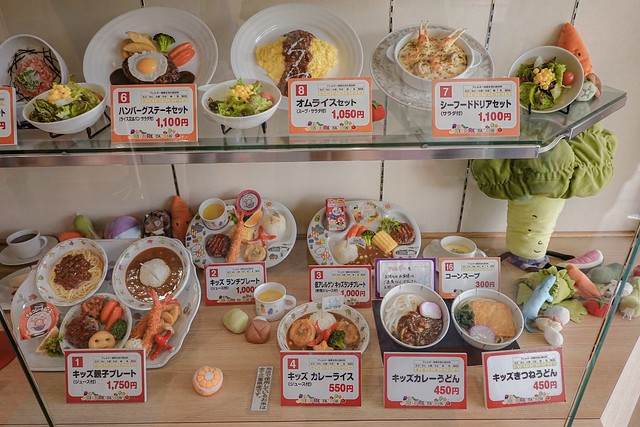
You can also find a kids-friendly restaurant that takes special care of children with their allergy-safe menu.
There’s even an Anpanman Museum which is the toddler’s heaven. By the way don’t be surprised that the facility is called “Anpanman Museum Nagoya” when it is actually in Mie prefecture. The same reason as “Tokyo Disneyland” in Chiba. Haha.

Don’t forget to spare sometime at Mitsui Outlet Park Jazz Dream Nagashima, Japan’s largest outlet mall to clear your waller before heading home! Take my money, Japan!!!

Keep the sales coming!! I bought an outfit for JPY780 here.
Shopping! That’s the best way to end your trip in Mie, or any trip in Japan.
Thank you for following my journey to Mie, a wonderful, versatile prefecture blessed with the abundance of stunning nature such as the Ago Bay and Akame 48 falls, unique traditions such as the ama divers and Iga-ninjas, rich history with the all-important Ise Jingu and Gojouban Yashiki samurai residences, fun attractions like the Shima Mediterranean Village and Nagashima Spaland, top-class hotels and resorts such as Shima Kanko Hotel The Bay Suites and Aquaignis, and most importantly, great, great, great food – from Michelin starred to yummy street snacks – which we Malaysians and Singaporeans all agree is one of the best things of traveling.
That’s Mie for you.



